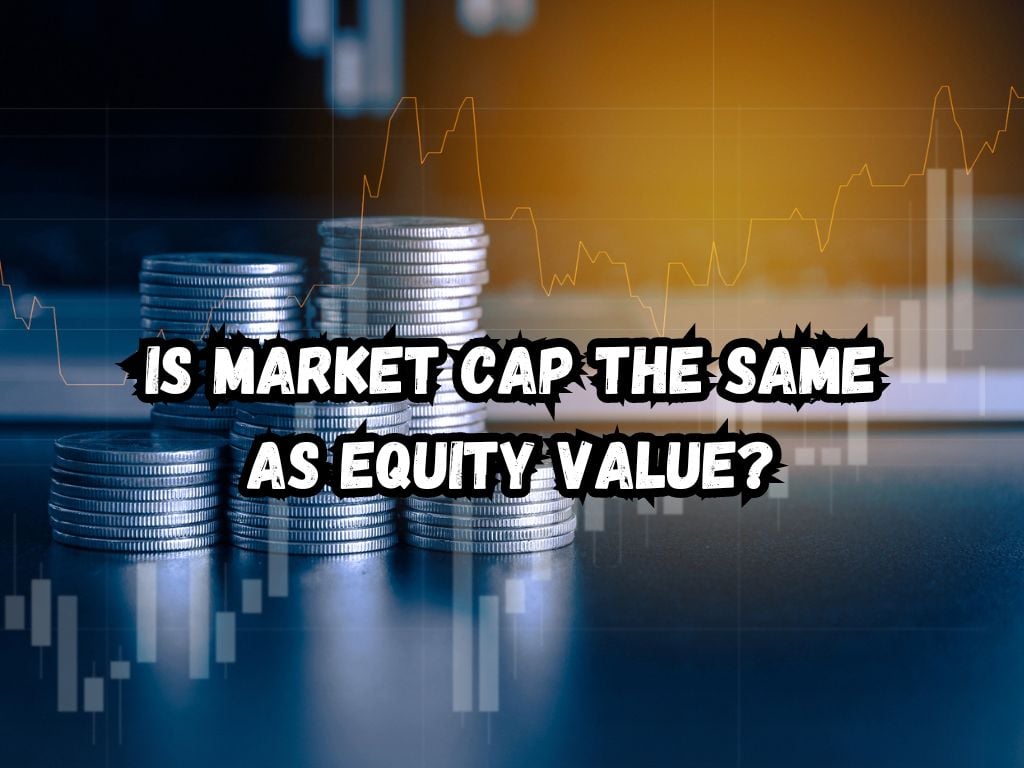To the untrained eye, financial jargon can seem like a foreign language. Even seasoned investors can struggle to decode the financial lexicon.
Today, we’re demystifying two key terms. So, is market cap the same as equity value? Let’s find out.
Is Market Cap the Same as Equity Value?
Market Capitalization, commonly referred to as ‘market cap,’ refers to the total dollar market value of a company’s outstanding shares of stock. It’s a benchmark used to rank the relative size of a company in the marketplace.
Calculating market cap is simple. You multiply a company’s current stock price by its total outstanding shares.
For instance, if a firm has 10 million outstanding shares, and each share trades at $15, its market cap is $150 million. So, market cap mirrors market perception. It doesn’t necessarily reflect the company’s actual worth.
While assessing firms, we classify them as small, medium, or large-cap. Small-cap firms have a market value of under $2 billion. Mid-cap companies fall between $2 billion and $10 billion.
Large-cap businesses have a market cap of more than $10 billion. Provided these figures offer insight, they circumnavigate the company’s balance sheet.

Understanding Equity Value
Equity value, often called market value, follows a similar train of thought with a slight detour. It recognizes the value of a company’s equity. Equity value calculates the net worth and gives a clearer understanding of a company’s fair value.
Here’s how we determine equity value. Start with the company’s total value, consider existing debts, and account for cash reserves.
Equity value equals the total value, minus debt, plus cash. This calculation examines the company’s interior health by acknowledging assets and liabilities.
Key Differences between Market Cap and Equity Value
Market cap and equity value serve different purposes. Market cap reflects the company’s market standing as determined by the stock price. Equity value reveals the business’s real worth, factoring in debt and cash reserves. So, are they the same? No, they aren’t.
Think of it this way: Market cap is how the world sees a company. It’s the exterior view—a sleek storefront or a comprehensive website. But, equity value opens us to the back office operations–it’s the “interior view.”
So, a company can show a high market cap while it paddles against the current of substantial debt. On the flip side, a firm with a lower market cap might sit on a significant cash reservoir that the exterior view overlooks.
The Relevance of Both Metrics in Investment Strategies
Despite the differences, both metrics deliver value for investors. They serve a dual function. They offer information about the corporation’s size (via market cap) and debt servicing capacity (via equity value).
Market cap offers an entry point to understand a firm’s scale, competitiveness, and risk factor. For example, large-cap businesses often offer a safety net for risk-averse investors. They might not offer skyrocketing returns, but they likely won’t crash overnight.
Equity value, conversely, offers a window into the company’s overall financial health. Thus, while investing, it’s essential to consider both. Market cap helps investors grasp the firm’s scale and industry standing. Equity value throws light on the balance sheet’s nitty-gritty, offering a more complete financial snapshot.

Case Studies
Let’s consider a real-life example. In 2020, Company A reported a market cap of $180 billion. Its stock traded at high volumes due to favorable market sentiment.
However, it carried a substantial long-term debt of $100 billion. So, while the exterior view appears rosy, the interior view tells a different story.
On the other hand, Company B held a market cap of $100 billion during the same period. But it had minimal debt and significant cash reserves. The low market cap, in this case, did not mirror the company’s financial health accurately.
Such examples underscore why both market cap and equity value deserve attention. They reflect different financial aspects and inform where your investment might end up.
Pro Tips for Investors
While ratios and metrics provide necessary guidance, the key lies in their interpretation. Remember, market cap can point to a company’s size and potential for returns. But, don’t let a high market cap lure you into a false sense of security.
Then comes the equity value. A lower equity value can warn of high debt levels. But it might not signal the end of a company’s growth story.
Many emerging industries like tech and renewables often operate on high debt levels and still offer substantial growth prospects.
Strike a balance and assess both metrics when allocating your assets. Pair these numbers with a solid understanding of the sector, market trends, and growth prospects.
Conclusion
Investors need the complete financial picture that both market cap and equity value offer. Though these metrics seem similar and often intertwine, they report invaluable insights when analyzed together.
Before your next investment, ask again: Is market cap the same as equity value? You’ll now have a ready answer: No, they’re different but equally significant in assessing a company’s worth.


 Tags:
Tags:










